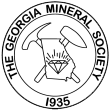GMS Field Trip May 2024
If you have any questions about field trips send email toGMS Field Trip
Jasper, Agate, Fossils, etc. in Alabama
Saturday, May 4, 2024
As has happened on prior trips to this location, the threat of rain hung over us, but, other than some rain in the Atlanta metro area on our way there plus a bit of a sprinkle when we arrived, the rain proved to be our friend yet again. It washed the gravel for us, so we hardly needed spray bottles to see the fun bits.
We have a tradition of scheduling this trip on a special day when we can. It all started when the first trip was on Pi Day (March 14th) and everyone brought pie. Then, we went on April Fool’s Day and looked for the elusive mineral aprafulite. For this trip, we chose Star Wars Day. Members expressed their “May the 4th be with you” sentiments by sharing Star Wars themed snacks including light saber pretzels, edible ewoks, beautifully hand-decorated candy-coated star trooper pretzels, several purple treats, Grogu (aka Baby Yoda) Valentine hearts candy, and Grogu Goldfish® crackers!
After a safety talk plus a review of boundaries and collecting rules, we caravanned into the quarry where thousands of tons of gravel rose around us like a rocky atoll. If Forrest Gump were a rockhound, he would say, “Gravel is like a box of chocolates. You never know what you’re gonna get.” The chocolatey brown gravel at this location lives up to that saying. Every time we are there, members find all sort of goodies.
Fossil finds for the day included a superb Elrathia trilobite in a concretion, agnostid trilobites in shale, marine shells, and, for the first time at this location, cephalopods and gastropods. Members also found a couple of brooksellas, curious formations once thought to be fossils, but now considered to be pseudo-fossils based on an extensive study co-authored by GMS member Morrison Nolan for his PhD thesis. A wishful thinking pseudo-fossil that went home that day is approximately a foot in diameter and looks like a huge vertebra, but we are pretty sure it is not a fossil. A possible fossil though, is a geode-like specimen lined with smoky quartz crystals. Its shape and outside pattern indicate it may be a coral – or maybe not. As of this writing, experts are still contemplating it. Fossil or not, it is a wonderful specimen. Another possible fossil is a piece of jasper with some fine banding could be a stromatolite, a trace fossil formed by cyanobacteria. Members have found stromatolites here before, so it is plausible.
Some of the “petrified wood” specimens found here are actually quartz that looks so much like wood that it is easily mistaken for petrified wood, and some specimens are casts of wood. Wood casts are not petrified wood, but they are fossils. A body fossil is the preservation of an organism, molecule by molecule. Petrification of wood occurs when the wood is permineralized, i.e., replaced by silica or other minerals, so petrified wood is a body fossil. A trace fossil indicates an organism existed, but is not preservation of the organism itself, so a cast is a trace fossil. Imagine two pieces of a tree surrounded by mud. Piece A is slowly permineralized by silica until none of the wood remains. Piece B rots away leaving a mold of itself in the clay. Silica fills the mold. The clay erodes away leaving the silica cast. Piece A became a body fossil, and piece B left a trace fossil – the cast. We find both types of wood fossils here as well as quartz that looks like petrified wood. All of them are fun to find, and it is good to know what they truly are.
Agates are always fun to find no matter where you are, and this location is no exception. Perhaps better described as “jaspagate”, a combination of jasper and agate, specimens here are interesting for their raised banding. They can be difficult to find because their colors are often muted. It helps to spray them with water to see the banding and bring out the colors. Just as we were leaving, the last agate of the day popped up with spectacular radiating quartz crystals surrounded by a ring of agate.
Jaspers are plentiful, some with striking red areas contrasting with black and brown, and some with a sparkling layer of druzy (droo-zee) quartz. One rock covered with druzy quartz and quartz lined vugs was earmarked as a Mother’s Day gift. Sharp-eyed rockhounds who can spot tiny dots in the gravel were rewarded with several oolitic (oh-uh-lit-ick) jasper specimens. The tiny dots are ooliths (oh-uh-liths), i.e., spherical concretions that form layer by layer and range in size from .25 mm to 2 mm in diameter. The best specimens have whole ooliths as well as cross sections showing the concentric layers within the ooliths. A similar type of rock we found has ooliths and other long objects, possibly from fossilized organic materials, embedded in jasper. One of the most interesting pieces of jasper found that day has impressions of large crystals, probably quartz.
We had a lot of fun with concretions whose curious shapes rival puffy clouds for playing the “what does it look like” game. Amongst the contenders were an almost spherical concretion where layers had broken off to form a “Grogu carrier”, a “hag stone” that allows one to see magical creatures through its hole, a sweet little heart, a “snail” hiding in its shell, a piece of “fudge”, and an “olive” that might be a sponge fossil. We even found a piece of “P” gravel in the mix, but it is not a tiny piece of gravel – it is a rock with a distinct letter “P” on it! One concretion was more than just fun to look at – there is pyrite in its core.
There were many other interesting rocks in the gravel too. Pegmatite rocks with mica, quartz, garnet, and feldspar are around, and are usually much larger than the gravel. Some schist that we found has white, angular crystals of feldspar. Members also find quartzite, metamorphic quartzite, hematite cemented conglomerates, and botryoidal hematite. Every time we are there, we find dark gray to green, translucent rock with light-colored circles that look like conchoidal fractures, but are not. These are still a mystery to us.
The quarry gentleman who was there to keep us safe dropped a special load of material for us. It came from the Conasauga Shale formation, and it was in that material that members found brooksellas and trilobites! We were stunned and surprised by his generosity and were thrilled to have the extra material to explore.
Many thanks to quarry management and personnel who not only allowed us to visit such a special place, but also kept us safe and made the place even more special for us. Thank you to members for complying with all of the safety rules, bringing me specimens to photograph for this report, sharing their Star Wars treats, and sending me photos after the trip. And, as always, thank you to Charles Carter for arranging such a fun trip!
Lori Carter on behalf of Charles Carter
e-mail:
May the 4th be with you!
Photos by Lori Carter
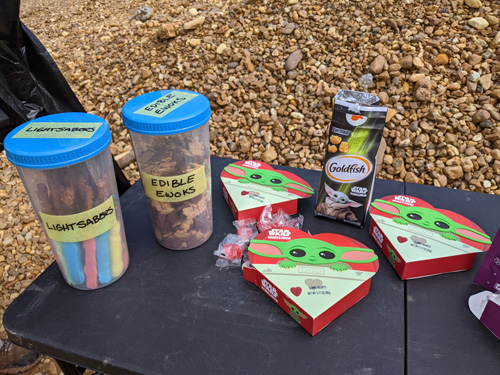
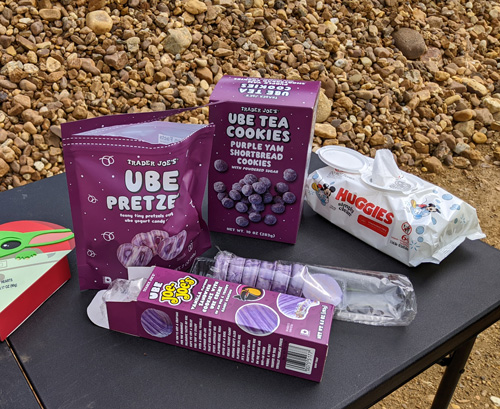
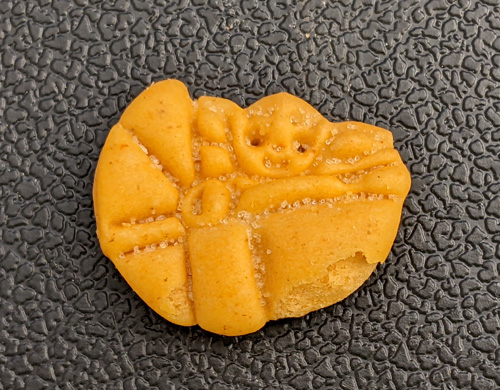
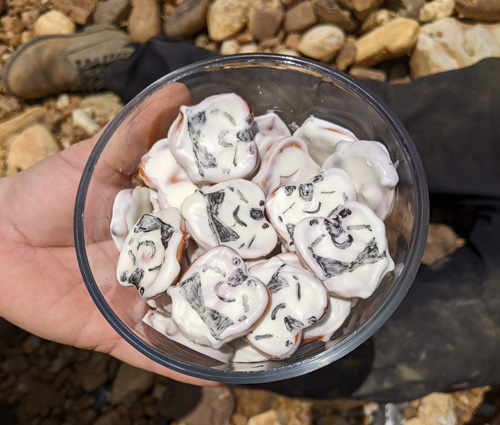
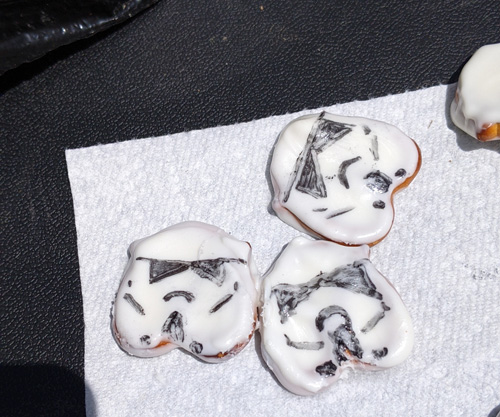
The 4th was with us!
Mountains of Gravel
Photos by Lori Carter
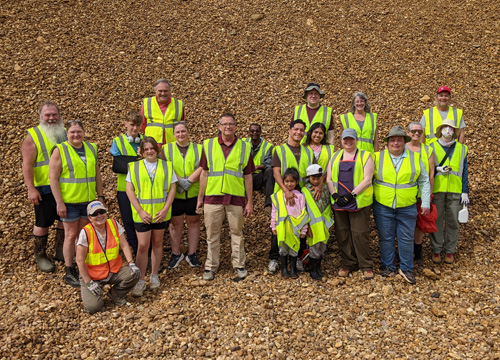
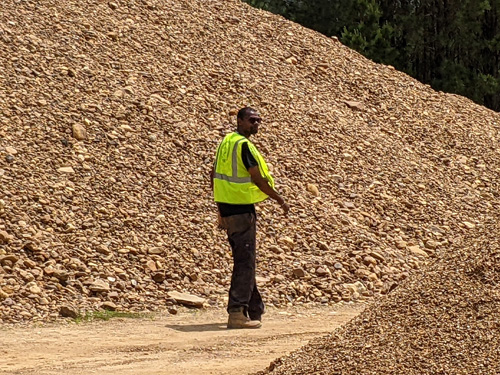
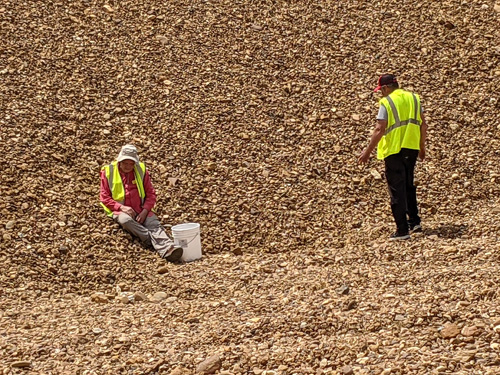

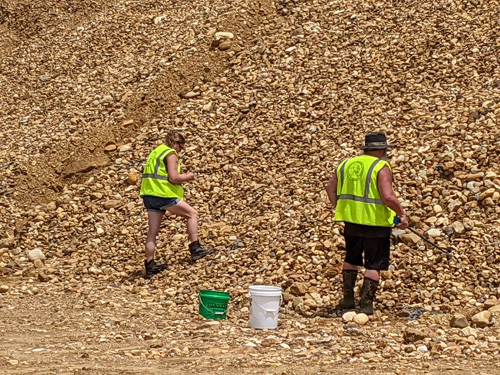
Like a box of chocolates
Photo by Lori Carter
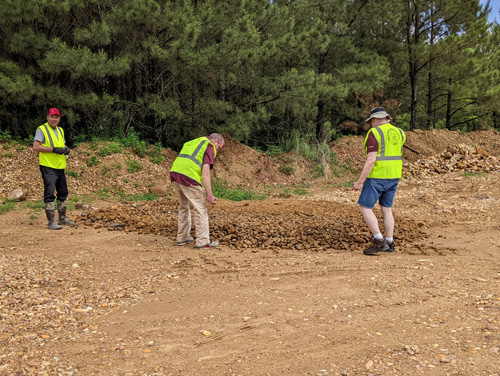
This area contains material from the Conasauga Shale formation.
Members found brooksellas and middle to uppper Cambrian trilobites in it.
Fossils
Photos by Lori Carter
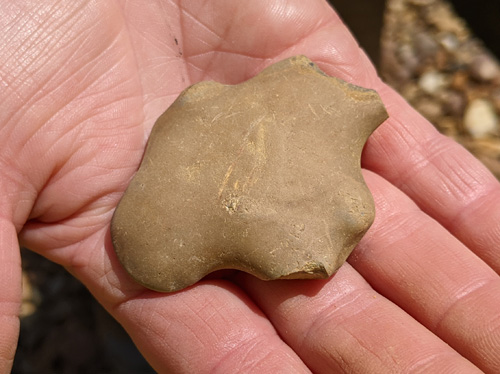
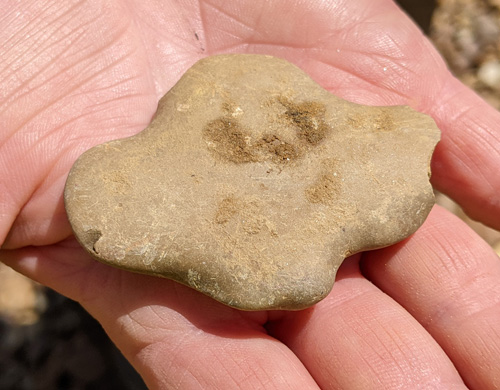

(Top and middle) A possible brooksella
(Bottom) A brooksella in matrix
Brooksellas are formations once thought to be fossils but are now classified as pseudo-fossils
Photos by Lori Carter
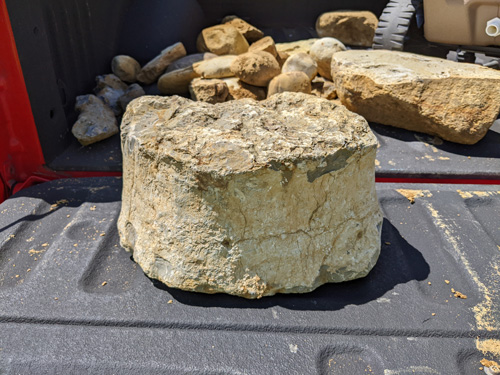
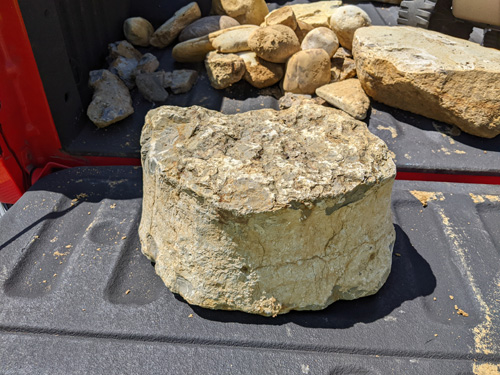
Speaking of pseudo-fossils, this guy looks like it could be a huge vertebra, but it most likely is not.
Wishful thinking begets nice yard rock.
Photos by Lori Carter
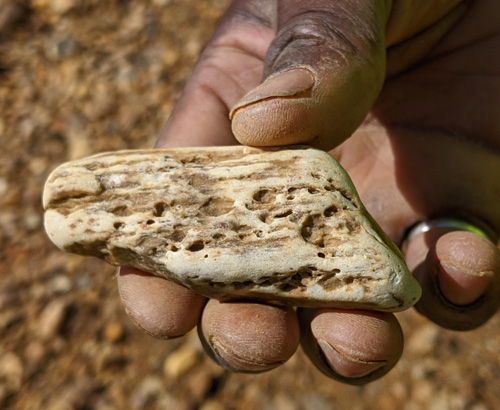
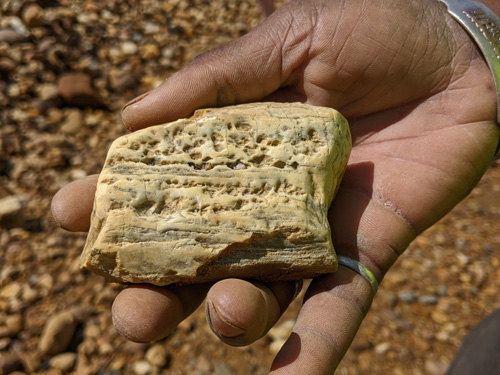
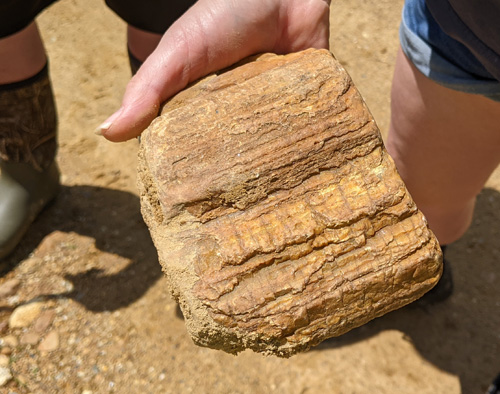
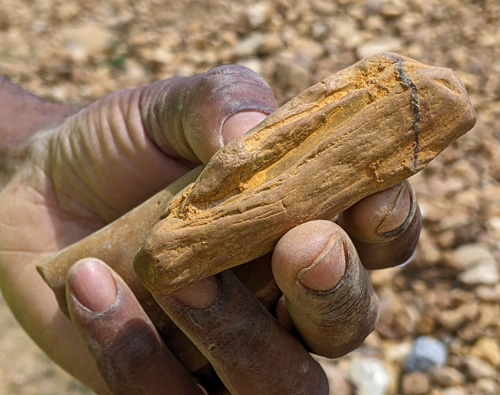
These specimens might be petrified wood, casts of wood, or quartz that looks like wood.
Petrified (permineralized) wood is a body fossil. A cast of wood is a trace fossil.
A body fossil is the preservation of an organism, molecule by molecule.
A trace fossil indicates an organism existed, but is not preservation of the organism itself.
Imagine two pieces of a tree surrounded by mud.
- Piece A is slowly replaced by silica until none of the wood remains.
- Piece B rots away leaving a mold of itself in the clay. Silica fills the mold. The clay erodes away leaving the silica cast.
Photos by Lori Carter
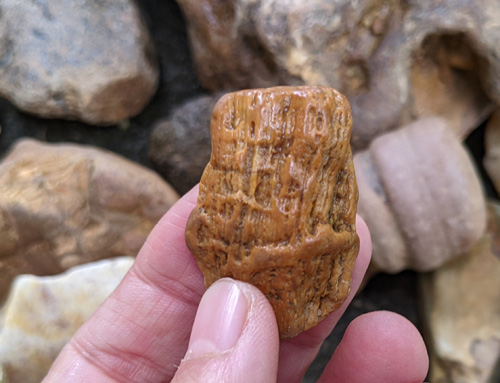
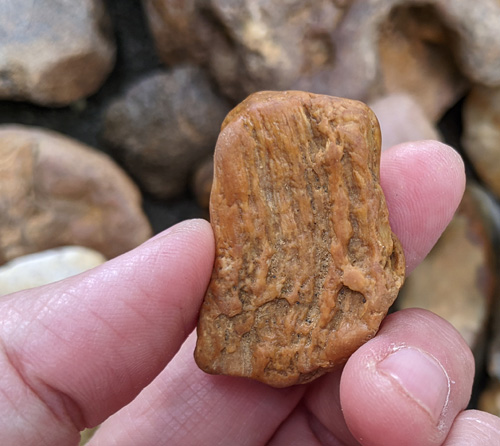
This specimen looks woody and seems to show some internal structure.
If internal structure has truly been preserved, it is petrified wood - a fossil.
If not, it is either a cast of wood - a trace fossil - or it is just some jasper that looks like wood.
Photos by Lori Carter
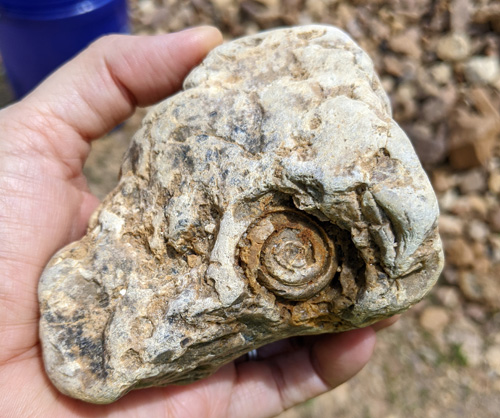
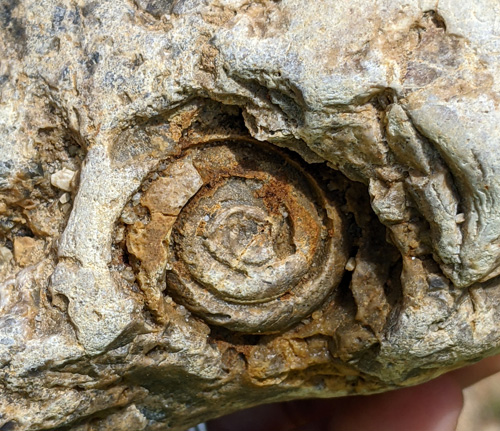
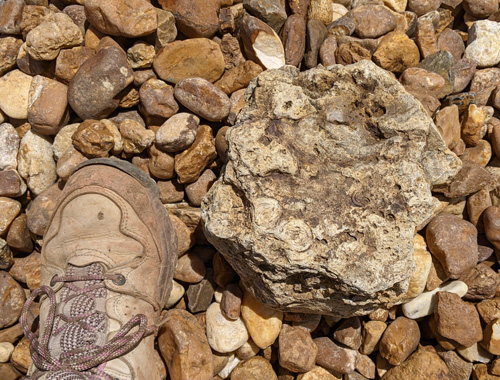

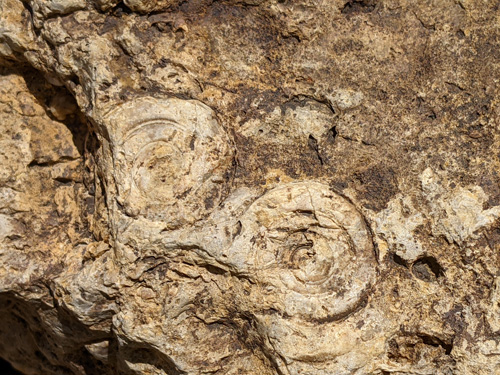

The first gastropod fossils we have seen here
Photos by Lori Carter
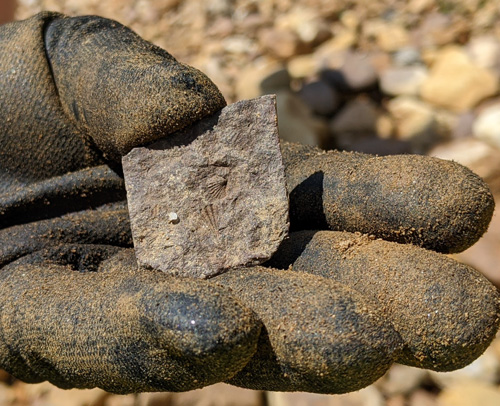

Shell fossils
Photos by Lori Carter
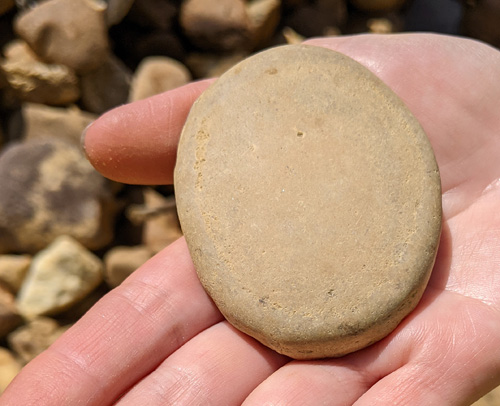
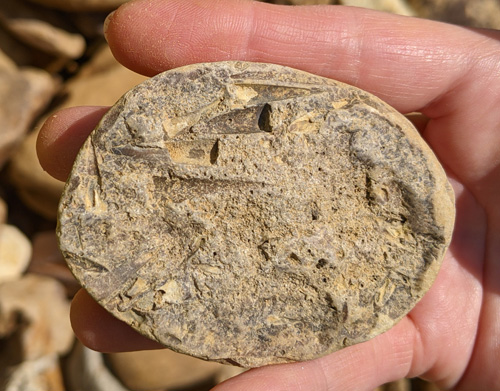
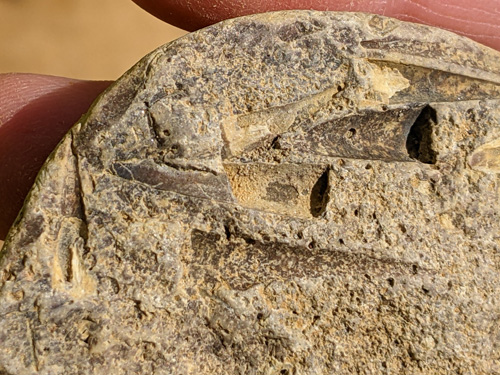
Impressions left by cephalopods, possibly with some preservation of the animals
Photos by Lori Carter
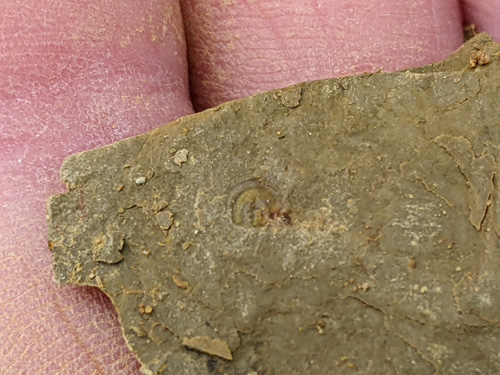
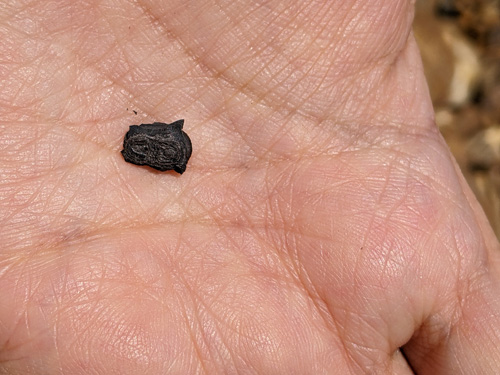
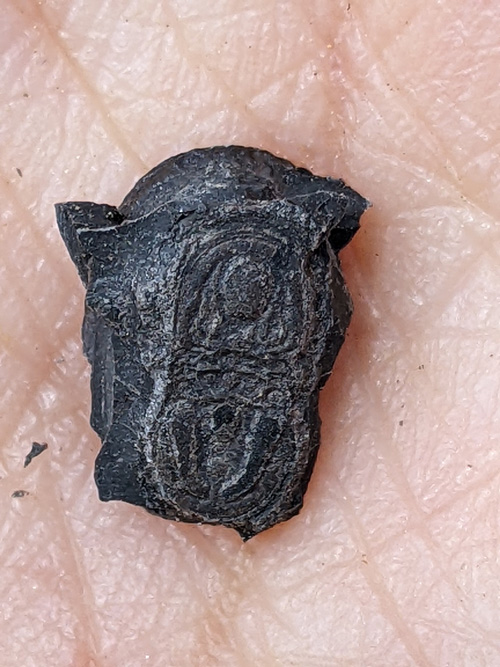
(Top) Part of an agnostid trilobite
(Middle and bottom) An agnostid trilobite and close-up of the same specimen
Photos by Lori Carter
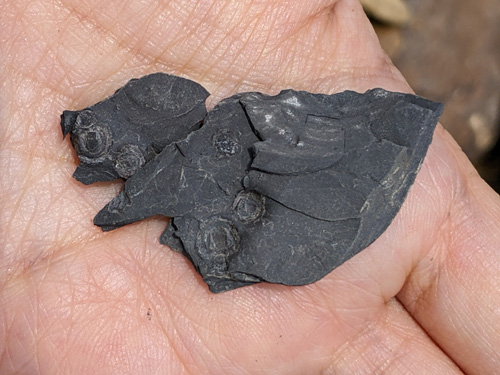
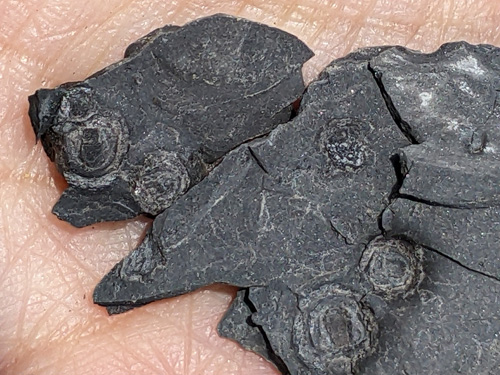
More agnostid trilobite bits
Photos by Lori Carter
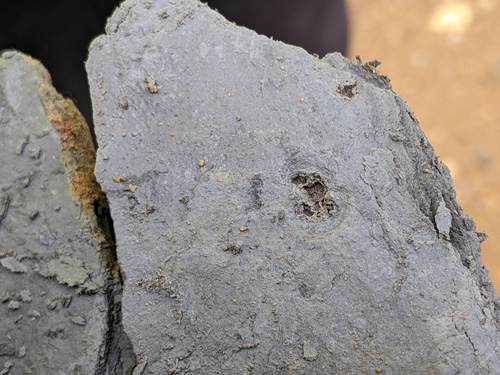
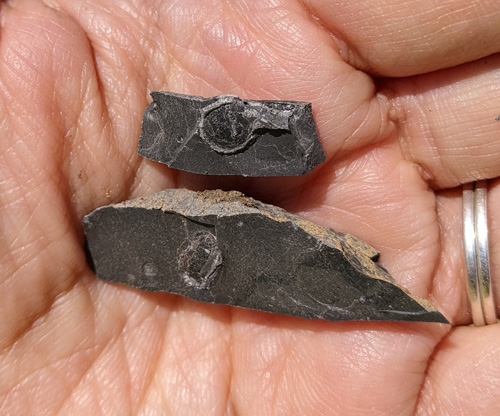
Possibly agnostid trilobite bits, or possibly gas bubbles
Photos by Lori Carter
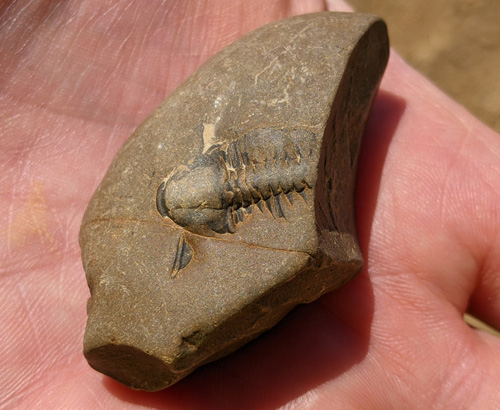
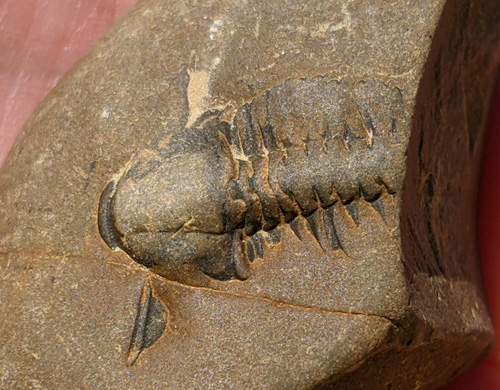
A superb Elrathia trilobite in a concretion
Photos by Lori Carter
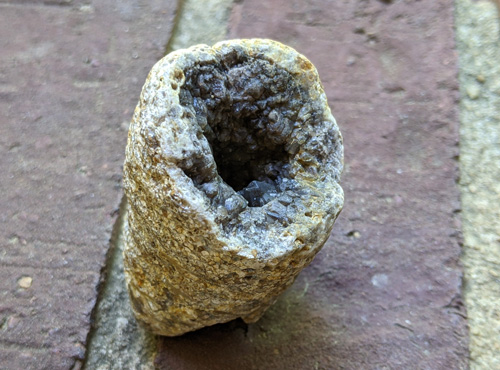

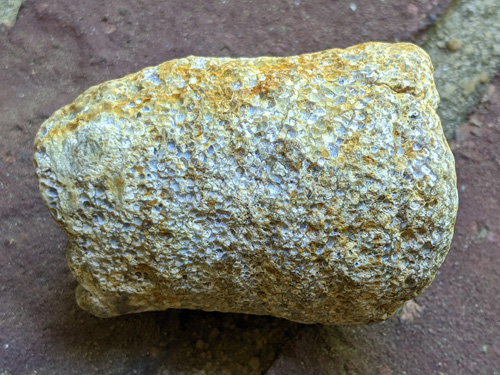
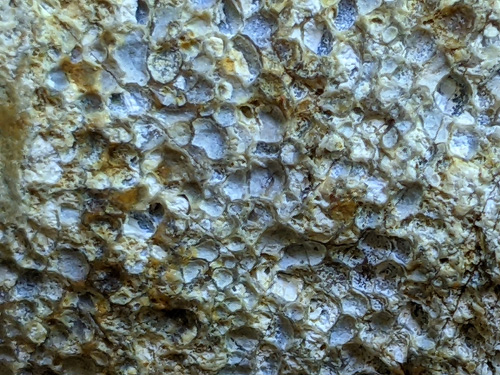
Geode-like specimen lined with smoky quartz crystals.
Its shape and exterior pattern lead us to coral, but we haven't confirmed that yet.
Photo by Lori Carter
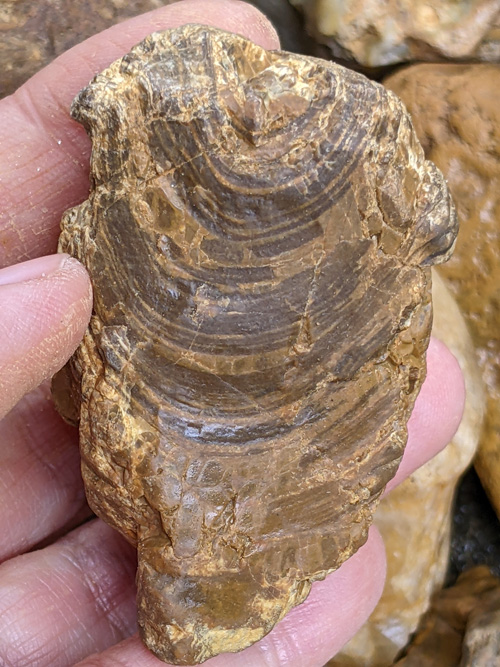
This could be stromatolite, a trace fossil formed by cyanobacteria.
Stromatolites have been found at this location before.
Agates
Photos by Lori Carter
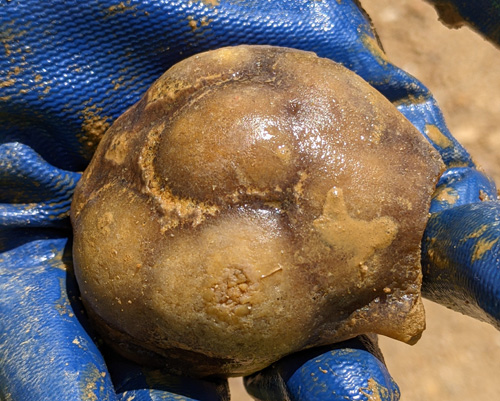

Find a weird blobby thing, flip it over, and it is an agate!
Photos by Lori Carter
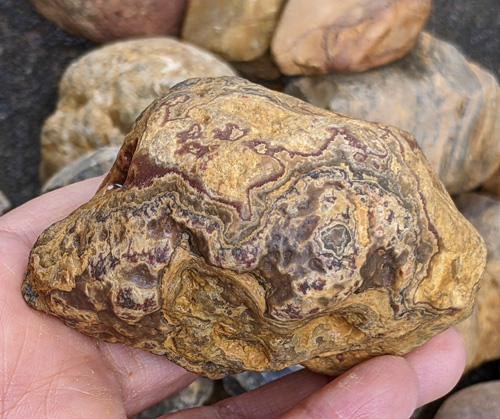
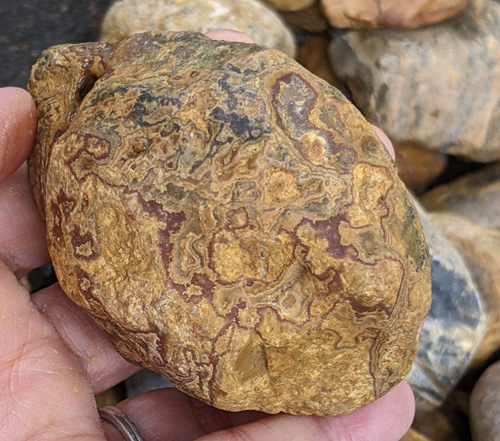
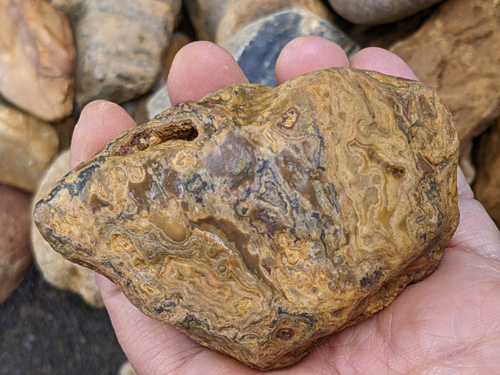
This agate is different on every side
Photos by Lori Carter
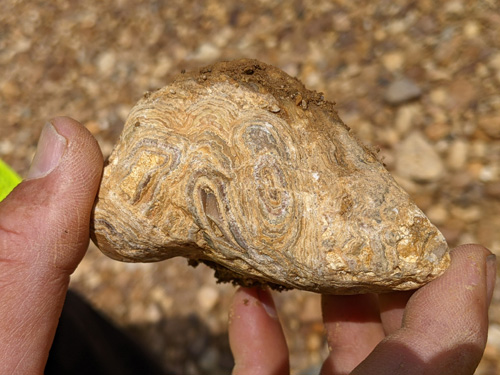

Dry, then wet
Photos by Lori Carter
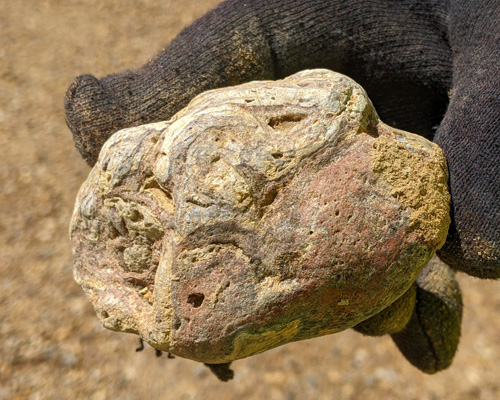
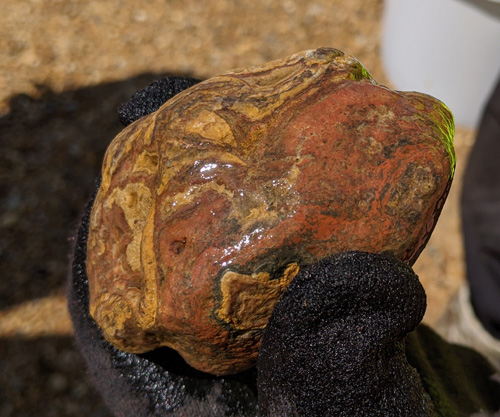
Another agate dry, then wet -- big difference!
Photos by Lori Carter
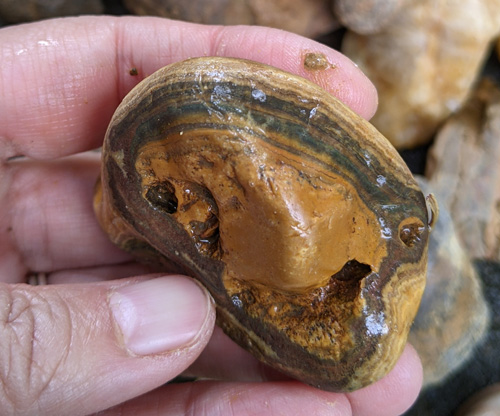
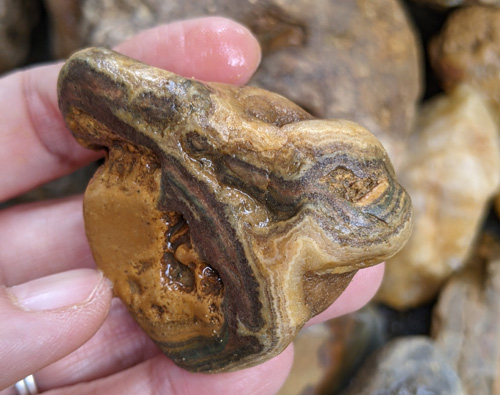
This jaspagate is a stony version of a mullet:
jasper business in the front, party agate in the back!
Photos by Lori Carter
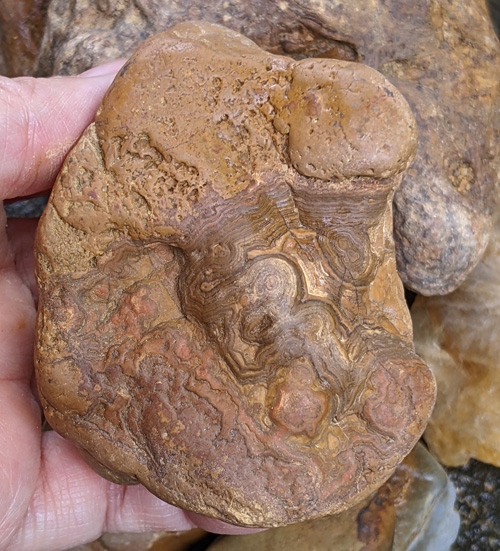

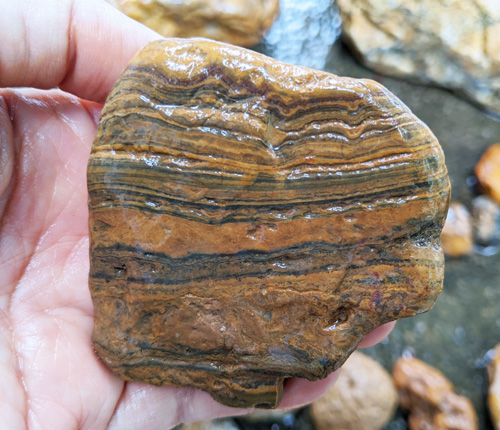
Subtle elegant beauty
Photo by Lori Carter
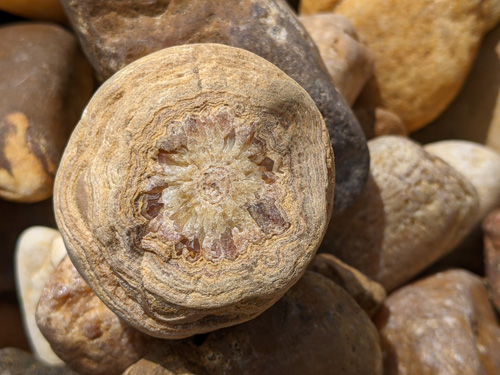
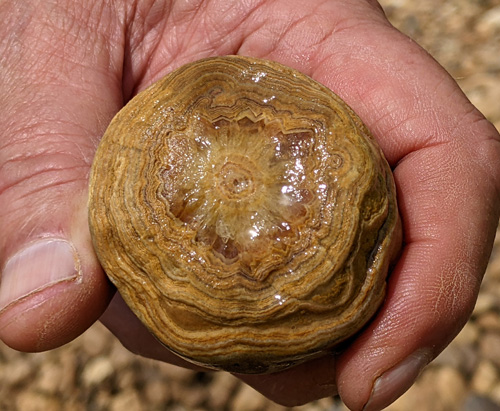
Last agate of the day has spectacular radiating quartz crystals surrounded by agate!
Jaspers
Photos by Lori Carter
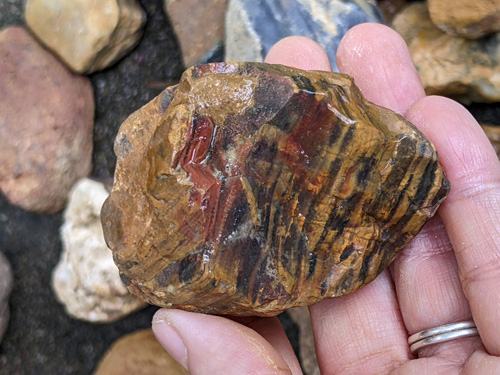

Colorful jaspers
Photos by Lori Carter
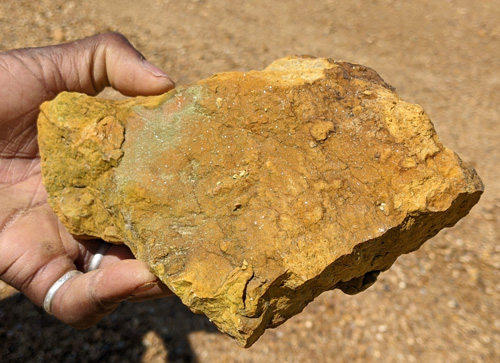
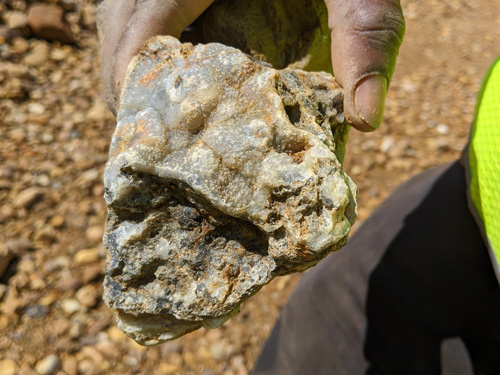
Druzy quartz covered jaspers, though pictures cannot do justice to their sparkly magnificence
Photo by Lori Carter
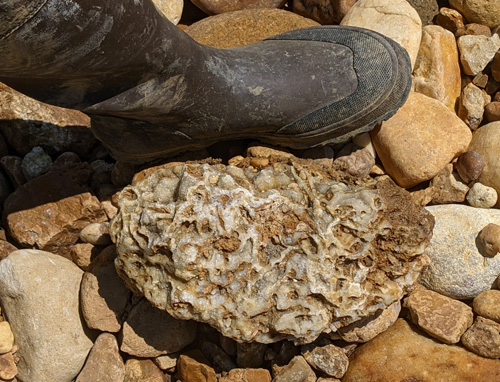
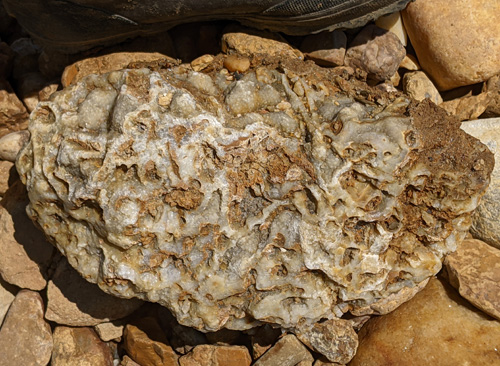
This druzy quartz and crystal-filled vug covered jasper became a Mother's Day gift!
Photos by Lori Carter

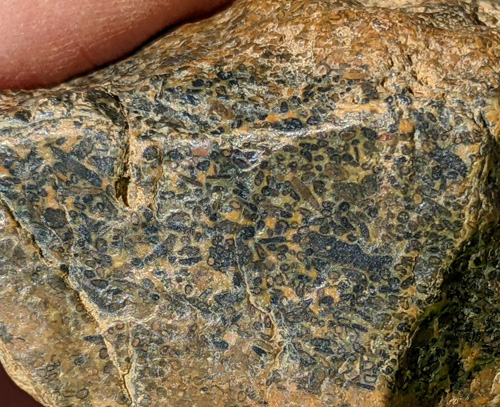
This oolitic jasper has beautiful ooliths and some long bits too
Photos by Lori Carter
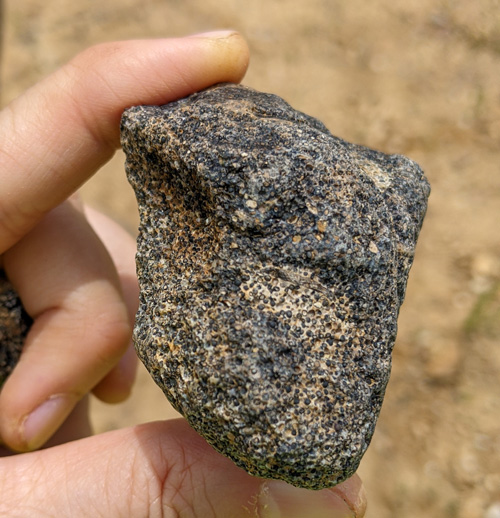
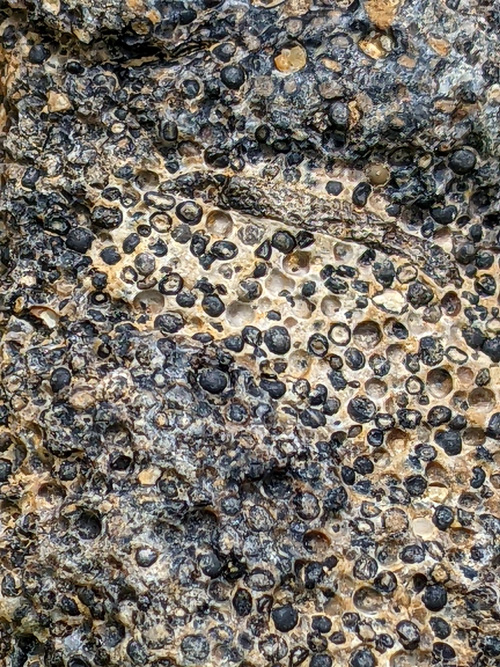
This oolitic jasper has whole ooliths,
cross sections showing the concentric layers within the ooliths,
and concave areas where ooliths popped out
Photos by Lori Carter

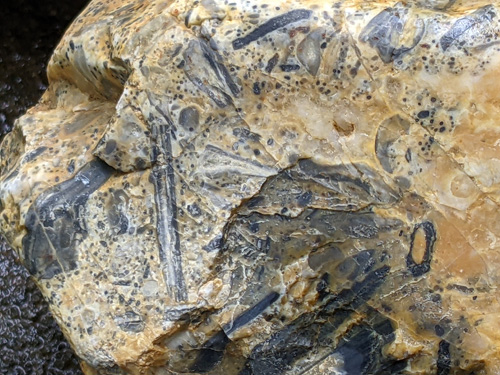
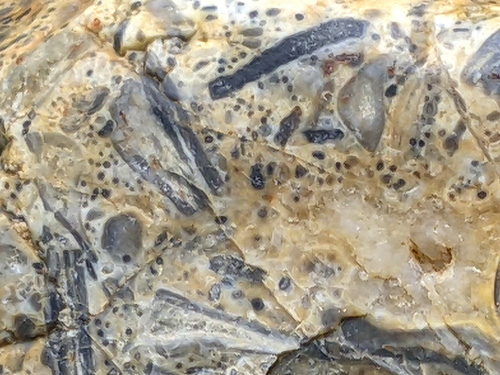
This rock has ooliths and other long objects, possibly from fossilized organic materials
Photos by Lori Carter
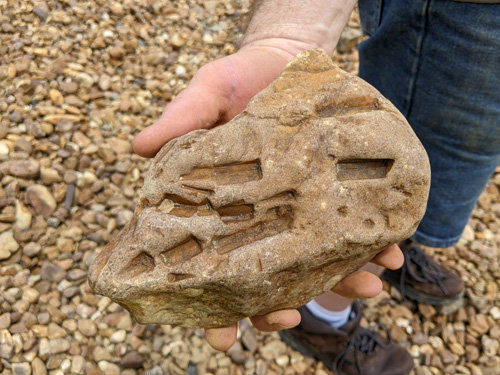
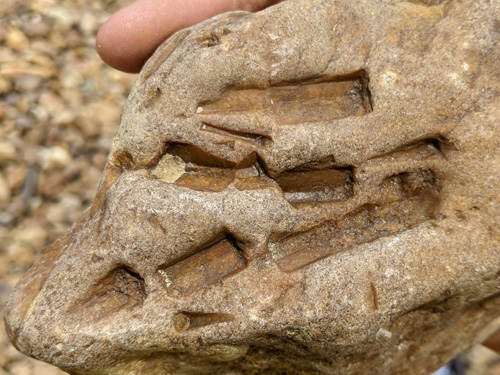
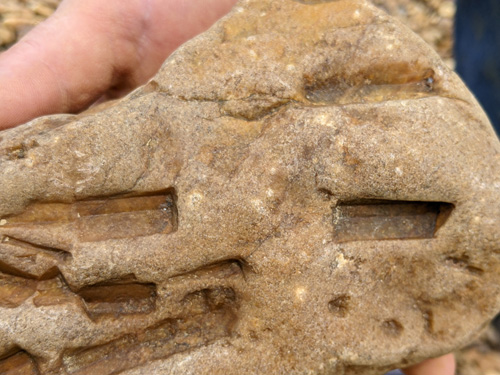
Impressions of large crystals, probably quartz, in jasper
Concretions
Photos by Lori Carter
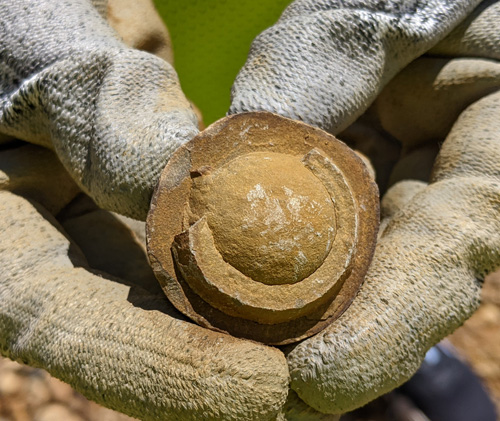
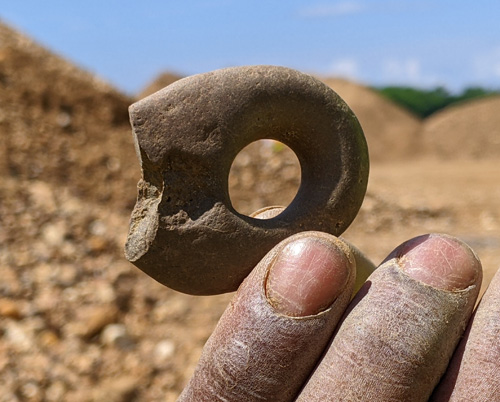
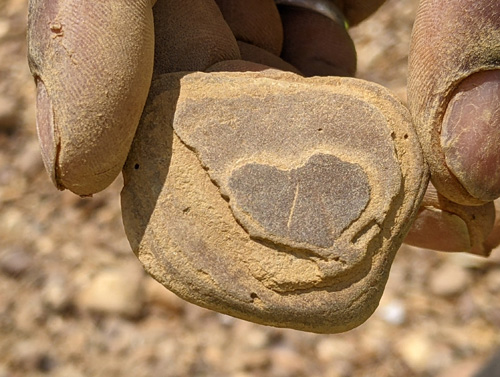
(Top) Grogu (aka Baby Yoda) carrier
(Middle) Hag stone, through which one can see magical creatures
(Bottom) Sweet little heart
Photos by Lori Carter
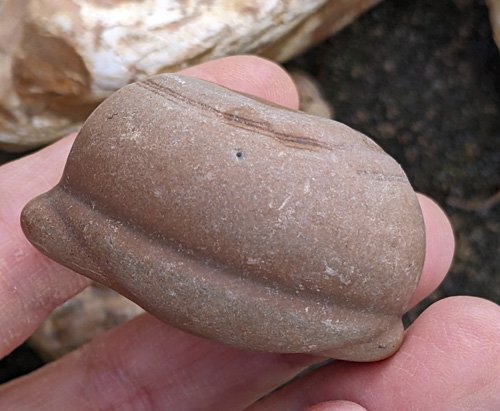

"Snail" hiding in its shell
Photo by Lori Carter
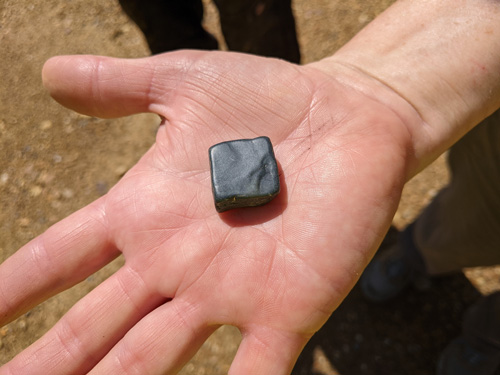
Piece of "fudge"
Photos by Lori Carter
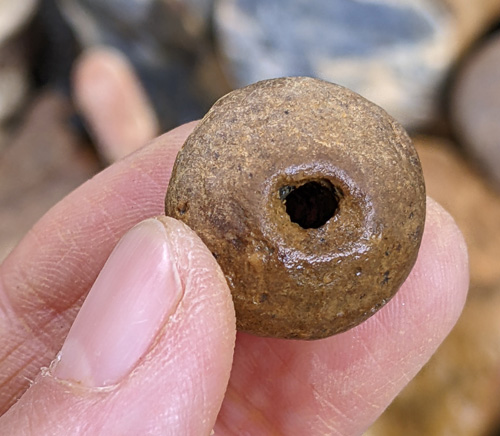

An "olive" that might be a fossil sponge
Photo by Lori Carter
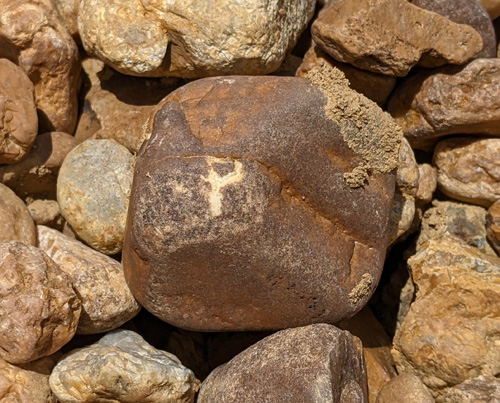
"P" gravel
Photo by Lori Carter

Concretion with pyrite in its core
Other Rocks
Photos by Lori Carter
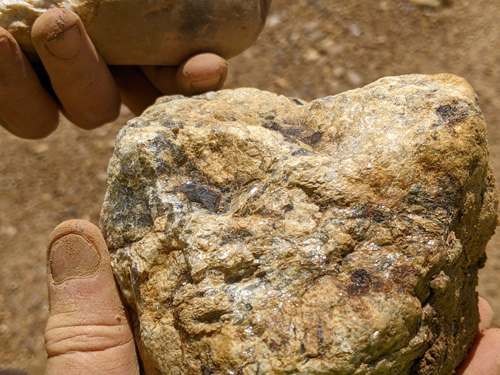
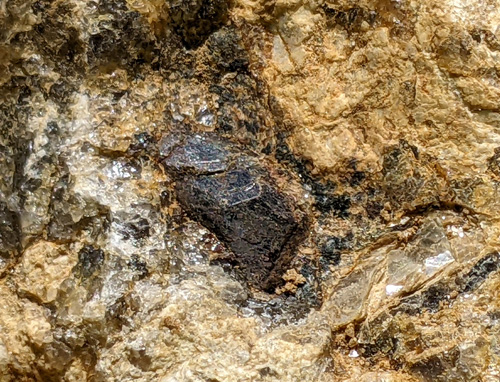
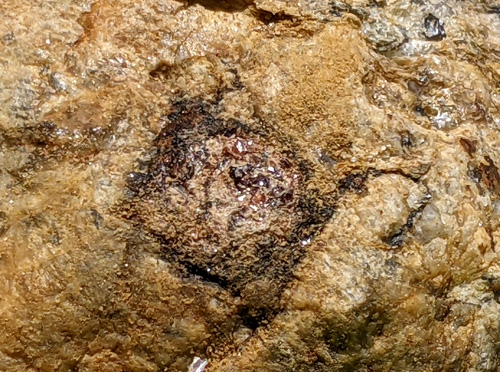
Rock with a smoky quartz crystal and garnet
Photos by Lori Carter
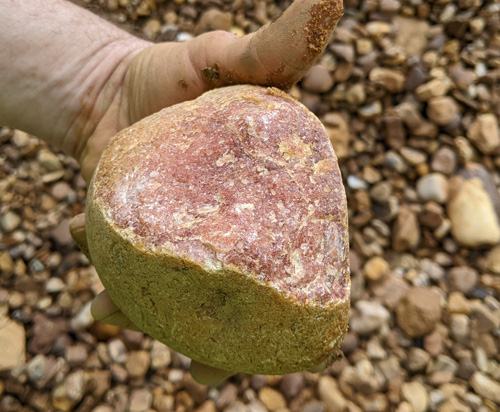
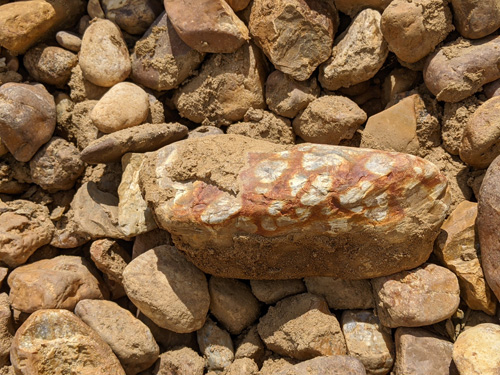
(Top) Beautiful pink quartzite
(Bottom) Rock with interesting circles
Photos by Lori Carter
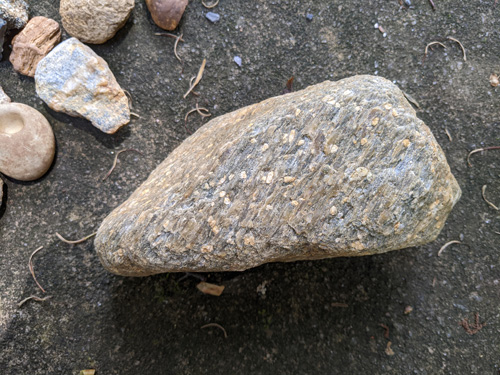
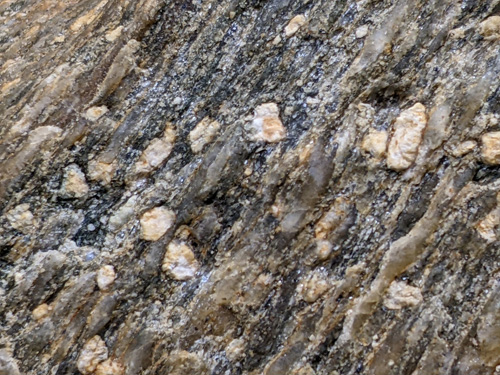
Schist with feldspar
Photos by Lori Carter
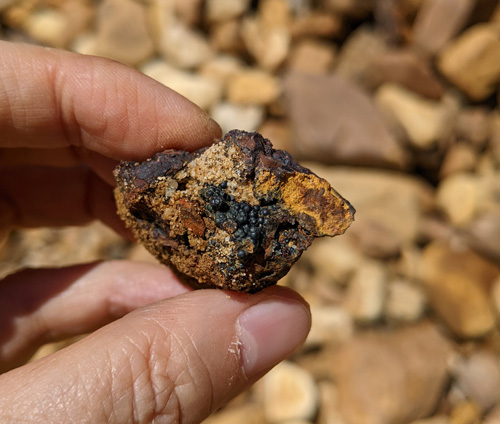

Botryoidal hematite
Photos by Lori Carter
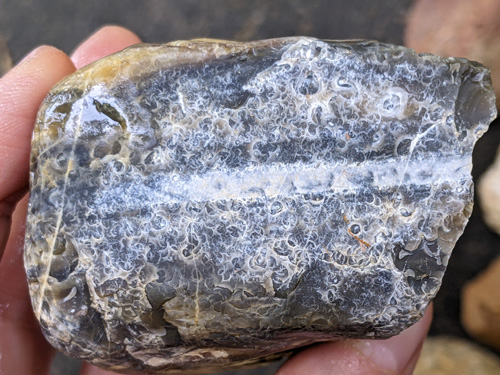
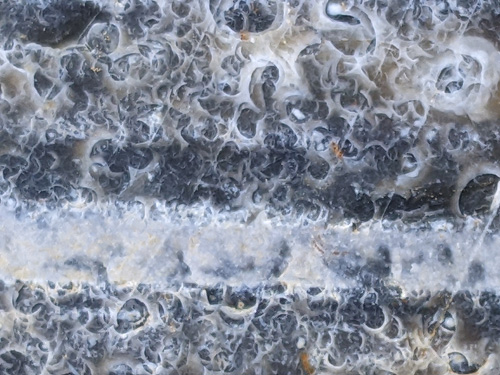
Rock with curious white circles that are still a mystery to us
Photos by Lori Carter

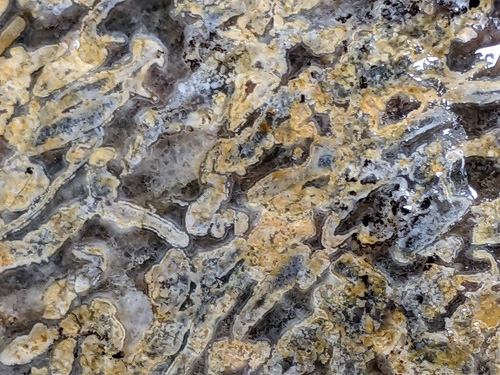
Sort of weird agatey rock
Photos from Ken C.
Photos by Ken C.
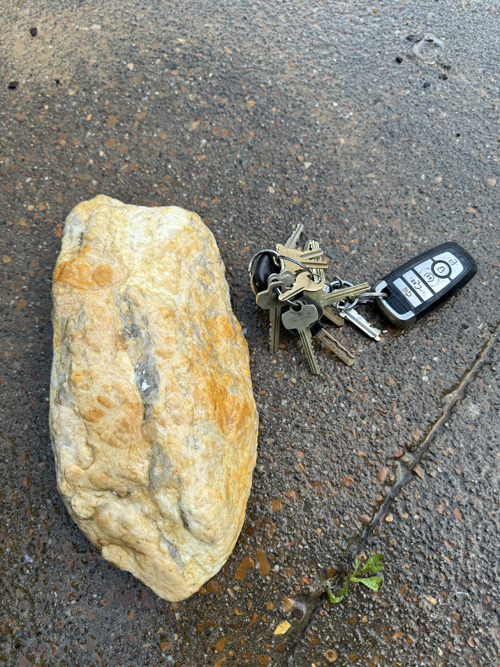
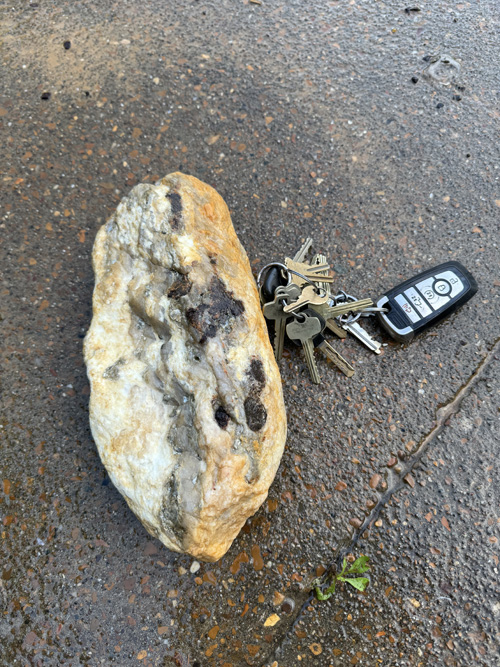
Pegmatite boulder with garnet as well as mica, quartz, and feldspar
Photos by Ken C.
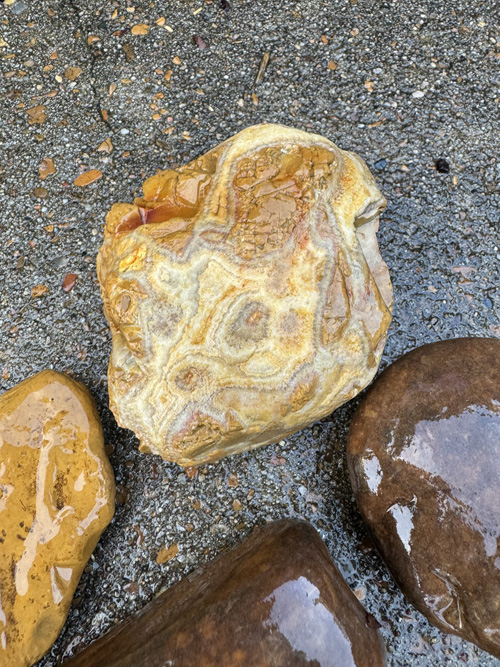
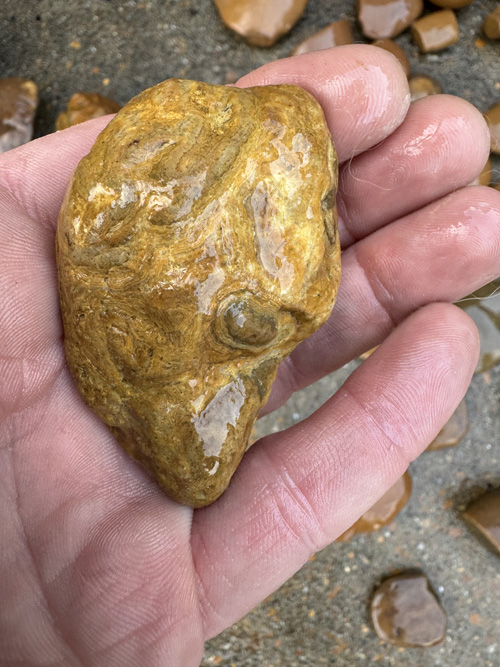
Couple of agates
Photo by Ken C.
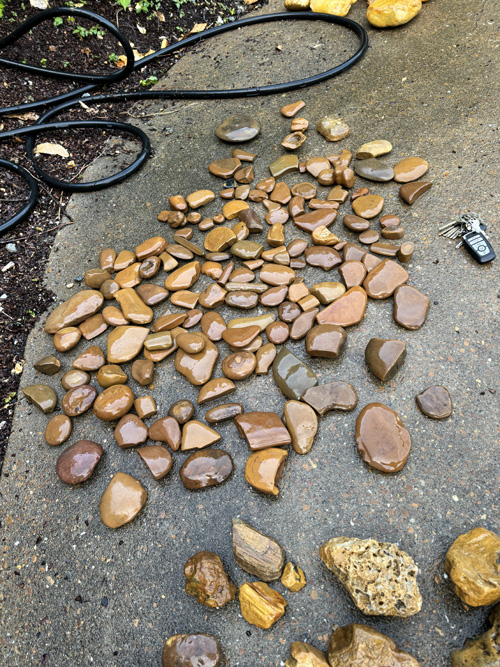
Concretions
Photo by Ken C.


Metamorphic quartzites
Photo by Ken C.
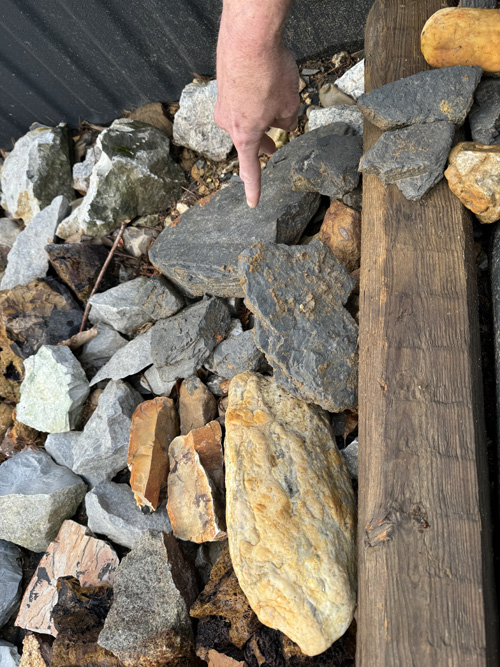
Conasauga shale
Photo by Ken C.
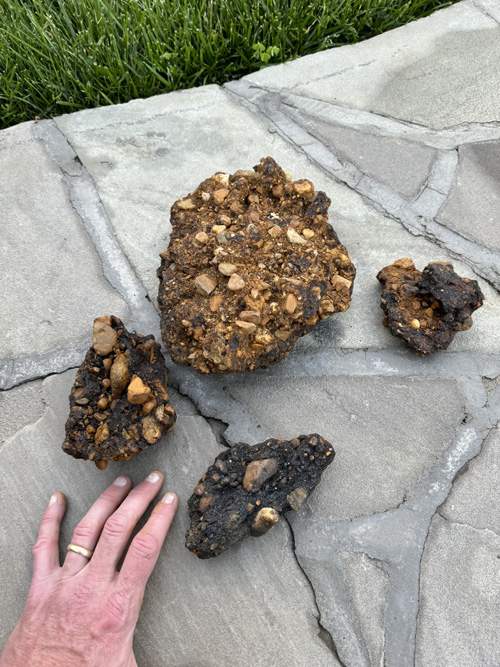
Very interesting hematite cemented conglomerates
Photos from Tina L.
Photo by Tina L.
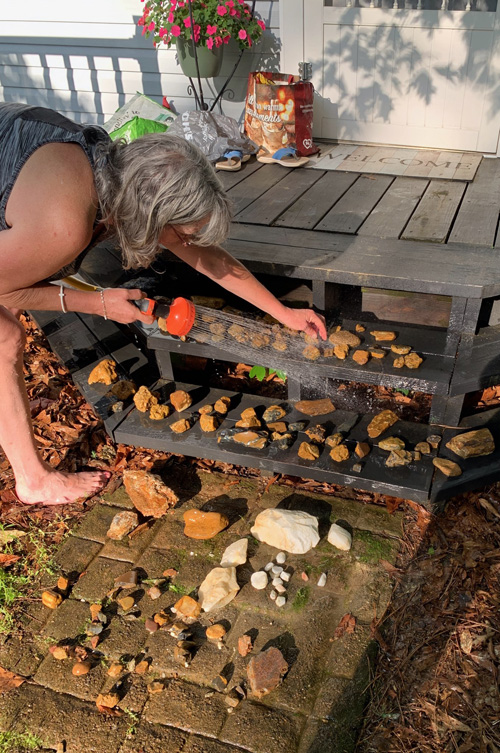
Washing and sorting rocks after the trip
Photos by Tina L.

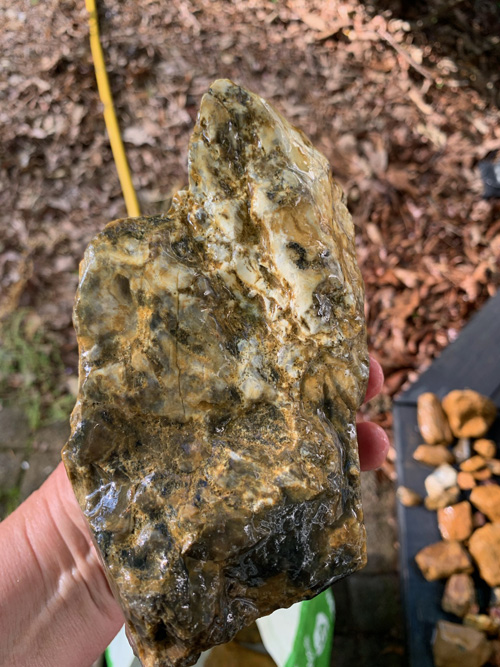
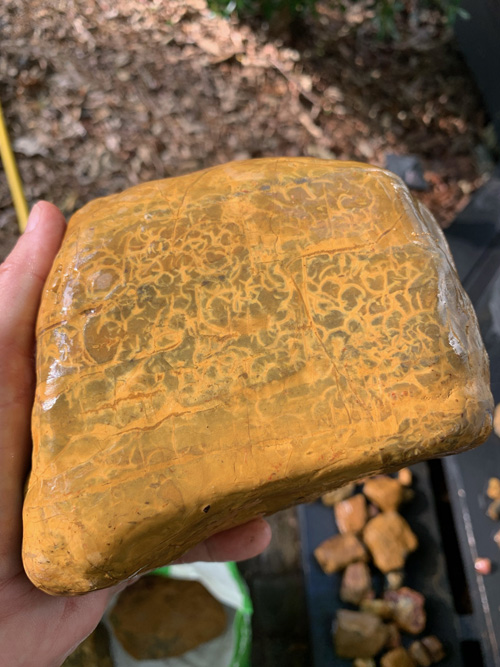
Some favorites
Photo by Tina L.

Happy sisters on the gravel!
Click below for field trip policies

Copyright © Georgia Mineral Society, Inc.
